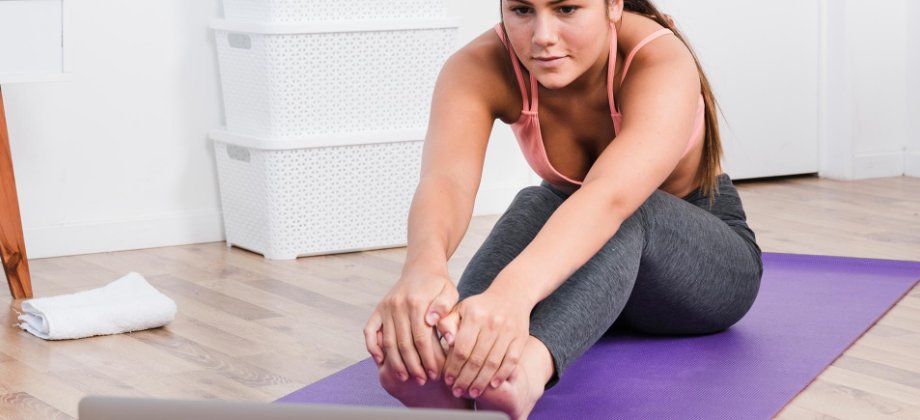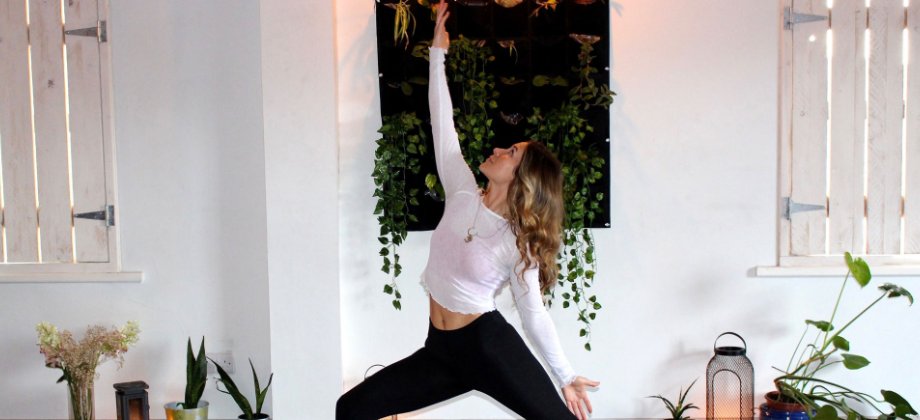
How To Create Meaningful Connections With Your Virtual Yogis
Online yoga classes are here to stay, and many teachers and yogis now favor the new virtual way to practice. Zoom yoga has some excellent pros, and for us teachers, we save time and money teaching virtually from home. However, online yoga classes can not replace every aspect of an in-person session, and perhaps the biggest downside is the loss of connection the screen brings.
One of the key differences is that we cannot adjust our yogis, and as you know, touch is a great way to build trust and connection. What’s more, online yoga can sometimes lack the community spirit that studio classes have.
However, there are ways that we can recreate that sense of community and build deep connections with our yogis, even if we’ve never met them in real life. Here are seven bond-building things you can incorporate into your online yoga classes.
Make time to chat before the class
When planning your class, schedule the first few minutes to chat and build rapport with your yogis instead of jumping straight into instruction. Doing this will go a long way in making them feel at ease, especially if they are new to online yoga. Use this time to share how you’re feeling, and open the space for your yogis to share too.
This idea works the best with small group sessions where the same yogis attend each week. As everyone gets to know each other, they will feel more comfortable sharing, and you’ll be able to offer valuable support to each other. Yogis may not open up so much in a drop-in class with 20+ yogis, but it’s still a friendly and welcoming way to break the ice.
Ask your yogis to have their cameras on.
If your yogis have their cameras off, then not only are you unable to see if they are doing the poses correctly, but it’s a lot harder to build a relationship with them. While not all students will always want to have their video on (and should not be forced to), politely asking this at the beginning of the class is certainly worth it.
With just a bit of time and effort, you’ll be able to create an even larger and more impactful community online than you could ever do at the studio.
Use yogis names, look for newcomers and welcome back regulars
If you’re lucky enough to have lots of yogis join your classes, it can be challenging to keep track of who is there. Therefore, take a moment to check the names on your screen as you start the lesson. If possible, welcome everyone personally as they join and make an effort to acknowledge those who are returning and those who are new.
Encourage two-way interaction
All teachers have their preference when it comes to yogis asking questions during class. Personally, I always let my yogis know that they can ask questions or request that I repeat instructions at any time. I highly recommend doing this if you want your students to feel comfortable, included, and empowered.
However, you should also realize that people may feel that interrupting you is rude if you haven’t stated otherwise and will suffer in a pose that doesn’t feel good instead of letting you know. Therefore, be sure to specify that two-way interaction is okay. What’s more, continuously check in with them throughout the class, too.
Offer post-class “tea and chat” sessions
If you want to go the extra mile and stand out as an online yoga teacher, you can offer optional “tea and chat” sessions after class. Invite those interested to make themselves a cup of tea and return to the screen for a short wind-down chat. This ritual is a lovely way to recreate the community feeling of an in-person yoga class and is particularly thoughtful if you previously offered tea and snacks at the studio.
 Teach your yogis how to self-adjust
Teach your yogis how to self-adjust
Of course, teaching online requires you to focus solely on your verbal cues and demonstrations. However, although you cannot physically adjust your students, you can teach them to self-adjust themselves.
For example, in an extended side angle pose (Utthita Parsvakonasana), tell your student to bring their top hand to their lower ribs and roll them upwards towards the ceiling. This movement is similar to the physical adjustment of helping them open up through the heart center and shoulders.
Stay in touch in between classes
Creating meaningful connections with your yogis extends beyond class, and staying in touch between sessions will also help nurture that teacher-student relationship.
For private yogis, I recommend sending a follow-up email after each class. You can craft it to the session’s theme, a particular pose they struggled with, or how they felt that day. For example, if your yogi mentioned they were feeling stressed from work, you can recommend a guided meditation or breathing technique that they can do after work that day.
If you’re teaching regular group classes, I recommend setting up a Facebook group. Invite all your yogis to it, then share helpful tips, resources, and book recommendations that they can look into during their free time. If you have pre-recorded meditations or tutorials, you can share them too, which will encourage your students to self-practice in between classes. This will also give you a good conversation starter for the next session, as you can follow up on what you shared.
Of course, this will require additional time on your part, but your efforts will pay off as your yogis will be more likely to continue your classes and recommend you to their friends.
Final Thoughts
Once you put these tips into practice, you’ll find that there’s nothing to lose in teaching virtual yoga classes but a whole lot to gain. With just a bit of time and effort, you’ll be able to create an even larger and more impactful community online than you could ever do at the studio.






